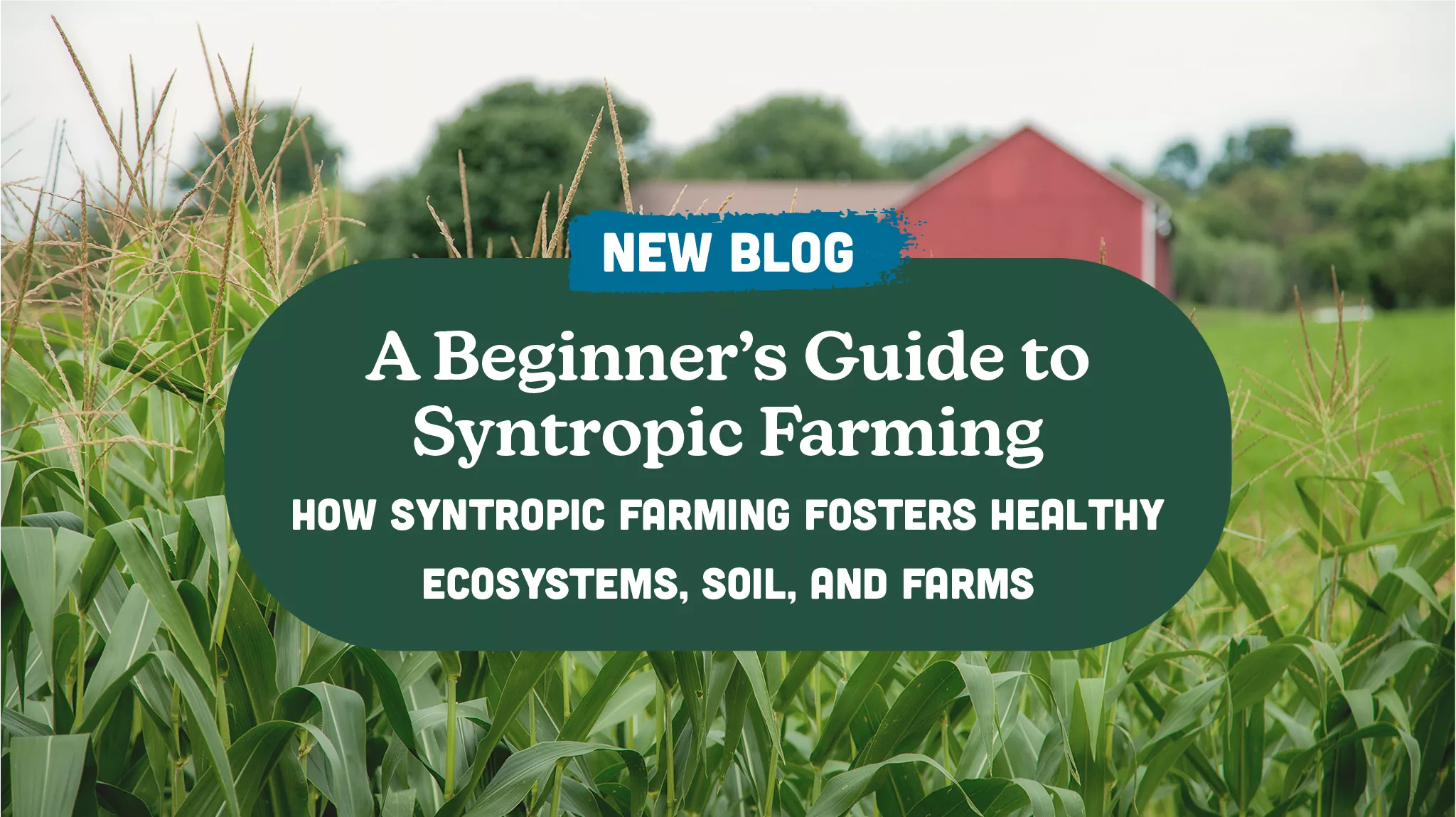A Beginner’s Guide to Syntropic Farming

Agriculture is constantly evolving as an art and a science, requiring hard work, dedication, and a love for the land. Farmers must study their land and educate themselves on the latest scientific findings and techniques. With hundreds of farming practices, it can be difficult for other community members to understand agriculture and its importance fully. So, we’re going to break them down! One of the most popular farming techniques is syntropic farming, a regenerative agricultural system that regenerates soil, increases biodiversity and encourages resilient crops.
But how does syntropic farming work, and what makes it stand out from conventional farming methods?
Developed by Brazilian farmer Ernst Götsch in the 1980s, syntropic farming focuses on creating systems that produce food without harming the land’s soil systems. On a syntropic farm, plants of all kinds—trees, shrubs, crops, and ground cover—are planted together, mimicking a natural forest. By doing this, the farm mirrors the forest’s natural ecosystems, promoting healthy soil and biodiversity, and resulting in bigger harvests. Unlike other farming methods such as tilling, syntropic farming strengthens the soil to create a self-sustaining, resilient farm.
In natural ecosystems, plants grow at different “stages” of development. For example, grasses and legumes are early-stage plants. These plants prepare the soil for more mature plants, such as trees. This is called ecological succession. Syntropic farming utilizes this succession to prepare the soil for mature crops, strengthening the soil and its beneficial organisms for future use. Biodiversity also plays a prominent role in syntropic farming. By growing multiple species together, syntropic farms can naturally reduce pest outbreaks, improve soil health, and adapt better to changing environmental conditions, creating an even more resilient system.
In practice, the “when” and “where” of planting play a major role in a successful syntropic farm. Because timing is so important in syntropic farming, farmers must decide when to plant what. This often entails planting a ground cover first, then early-stage plants, then pioneer plants, and eventually, late-stage plants.
The layout of a farm also plays a huge role in syntropic farming, as it’s instrumental in mimicking natural forest layouts. For example, tree crops are often planted on the outsides of crop rows, as they’ll eventually provide shade for other crops.
So, if syntropic farming is this great, why aren’t more farmers using it?
Much like any farming practice, syntropic farming has pros and cons. While the practice can restore degraded soil, boost ecosystem health, sequester carbon, and increase crop resilience and yield, it also requires a hefty learning curve and long-term commitment. Farmers must first study ecological processes to make syntropic farming work, and on top of that, there’s an upfront investment in resources to get the system started.
Syntropic farming is just one piece of a much bigger puzzle. Like any agricultural technique, this practice requires diligence, devotion, and dedication. Our farmers dedicate their lives to educating themselves and caring for the land we love. No matter the method, farmers feed our communities and make Lancaster County such a wonderful place to be. To learn about ways you can support our local farms, click here. To learn more about syntropic farming and ways you can implement the practice yourself, check out the resources below!
Resources:
https://www.permalogica.com/post/syntropic-farming-a-comprehensive-overview
https://news.uchicago.edu/explainer/what-is-ecological-succession
